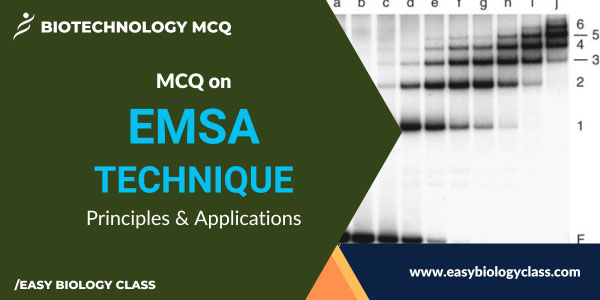
MCQ on Green Fluorescent Protein (GFP)
Green fluorescent proteins (GFP) are naturally occurring proteins that emit green light when exposed to ultraviolet or blue light. Widely used as a biomarker, GFP […]

Green fluorescent proteins (GFP) are naturally occurring proteins that emit green light when exposed to ultraviolet or blue light. Widely used as a biomarker, GFP […]

Gene knockout is a genetic technique wherein a specific gene is intentionally deactivated or “knocked out” in an organism. This allows researchers to study the […]

Northern blotting is a molecular biology technique used to study gene expression by detecting and analyzing specific RNA molecules in a sample. It involves electrophoresis […]

Electrophoretic Mobility Shift Assay (EMSA), also known as gel shift or band shift assay, is a molecular biology technique. It’s used to study protein–DNA interactions […]

Enzyme-Linked Immunosorbent Assay (ELISA) is a biochemical test used to detect and quantify specific proteins, antibodies, or antigens in biological samples. It involves using antibodies […]

The CRISPR-Cas (Clustered Regularly Interspaced Short Palindromic Repeats and CRISPR-associated proteins) system is a revolutionary genome editing tool in molecular biology. It enables precise modification […]

Cre-lox recombination is a genetic engineering technique used to manipulate DNA in living organisms. It involves the enzyme Cre recombinase, which recognizes specific DNA sequences […]

The central dogma of molecular biology is a fundamental concept that describes the flow of genetic information in cells. It states that DNA encodes genetic […]

DNA (Deoxyribonucleic Acid) is a molecule that carries genetic information in living organisms. It consists of a double helix structure made up of nucleotides containing […]